Welcome to your ultimate roadmap for launching a successful dropshipping business in 2025. As e-commerce continues to soar—projected to exceed $7 trillion globally this year—dropshipping remains one of the most accessible, low-risk ways to break into online retail without holding inventory or managing complex logistics. Whether you’re a complete beginner or a seasoned entrepreneur looking to diversify your income streams, this step-by-step guide will walk you through every critical milestone, from niche selection and supplier vetting to store setup, marketing strategies, and scaling tactics tailored for the competitive 2025 landscape.
What is a dropshipping business?
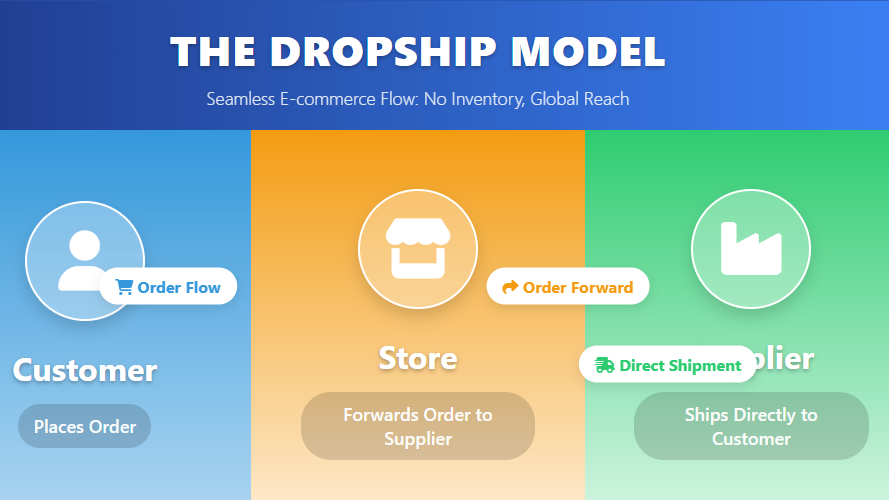
Dropshipping is an ecommerce model where you sell products without holding any inventory. When a customer orders from your store, you forward the order to a supplier who ships the item directly to the customer. In other words, you’re essentially the middleman: you handle the storefront and marketing, while suppliers handle the products and fulfillment. Even in 2025, dropshipping remains viable – in fact, the global dropshipping market was about $351.8 billion in 2024 and is projected to grow past $500 billion by 2026. Smartphones and online shopping are driving new stores, and the market continues expanding (one recent report notes Asia-Pacific already has ~35% of the dropshipping market and North America ~33%).
A dropshipping business is a retail fulfillment model in which the store owner (you) sells products to customers without ever physically stocking inventory. Instead, when a customer places an order:
You receive the order on your online store.
You forward the order and customer details to a third-party supplier (often a wholesaler or manufacturer).
The supplier picks, packs, and ships the product directly to your customer under your branding.
Key Advantages
Low startup cost: No need to buy bulk inventory upfront.
Minimal overhead: You don’t need a warehouse or staff to handle packing and shipping.
Wide product selection: You can offer thousands of items from multiple suppliers.
Location flexibility: You can run your store from anywhere.
How to start a dropshipping business Step-by-Step
1. Finding Your Niche
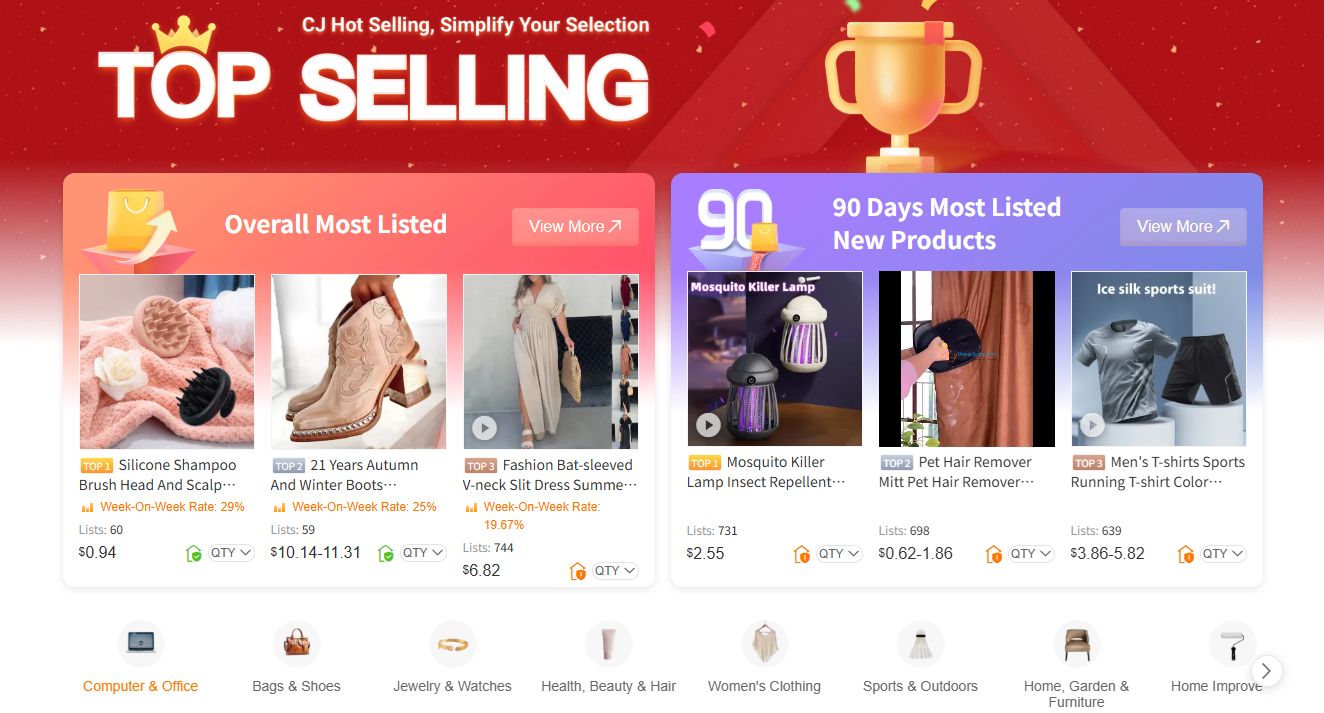
The first big decision is your niche: the specific market segment or product category you’ll focus on. A narrow niche helps you target marketing, build expertise, and stand out from general stores. Start by considering your own interests and skills. What are you passionate about or knowledgeable in? For example, if you love fitness, you might niche down to “yoga accessories” or “home workout gear.” If you have a fashion eye, perhaps women’s athleisure or eco-friendly bags. As CJdropshipping advises, “the key is finding an area you’re passionate about and have some skills in”. This makes running the store more enjoyable and helps you understand your customers.
Next, define your niche in terms of customer and product criteria: price range (budget vs. luxury), quality level, demographics (age, gender, income), or psychographics (hobbies, values). For instance, “outdoor survival gear for camping enthusiasts” is a clearer niche than just “outdoor gear.” Brainstorm a broad list of niche ideas, then narrow it down by looking at competition and demand. Tools like Google Trends, keyword research tools, and even browsing Amazon bestsellers can show which topics are popular. For example, one strategy is to look at Facebook groups or Reddit communities: are people talking about products in your niche? Google’s Think with Google and Nielsen reports can also reveal trending product areas.
2. Validating Demand
Once you have a niche idea, validate it before investing too much time. Look at existing competition: if dozens of stores sell the same niche items, that can actually signal good demand – but it also means you’ll need a unique angle to stand out. Talk directly to potential customers if possible. Join relevant online forums, Facebook groups, or Quora discussions to see if people are complaining about problems you could solve with products. Ask questions or run small polls to gauge interest.
Another tactic is to build an audience before launch. Consider using crowdfunding platforms (like Kickstarter or Indiegogo) to pitch your product idea and collect feedback. This can double as marketing – you get real demand signals and email leads before you even sell the product. Importantly, research overall trends: set Google Alerts for niche keywords, follow influencers or industry blogs, and note any sudden spikes in interest. Dropshipping is highly tied to trends, so staying up-to-date helps you spot breakout products.
In short: test your idea. Are people searching for and talking about it? Are similar products selling elsewhere? If it passes these checks, it’s a good sign you’ve found a viable niche.
3. Choosing a Platform
With niche in hand, pick an ecommerce platform to build your store. The main options for 2025 include Shopify, WooCommerce (WordPress), TikTok Shop, and Temu. Here’s a quick rundown:
-
Shopify: A fully hosted platform, Shopify is popular for its ease of use, built-in features, and huge app ecosystem. It handles hosting, security, and payments for you. As one comparison notes, Shopify is known for “unparalleled sales features and scalability”. It’s often the fastest way to launch, with many free or paid store themes and an easy drag-and-drop editor. Shopify also supports dropshipping through apps (like CJdropshipping app, etc.).
-
WooCommerce: This is a free ecommerce plugin for WordPress. It gives you total control over your site (you manage hosting, design, SEO, etc.). According to Website Builder Expert, it “requires more work to set up” than Shopify – you need to purchase hosting, install WordPress, pick a theme, and handle plugins yourself. In return, WooCommerce can have lower ongoing costs and can be better for SEO (since WordPress is very search-engine-friendly). If you’re comfortable with tech and want a highly customized store, WooCommerce is a solid choice. (However, be prepared to handle updates, security, and performance on your own hosting.)
-
TikTok Shop: As social commerce grows, TikTok Shop lets you sell products directly through the TikTok app. Essentially, you maintain an online store elsewhere but link your products into TikTok. Users can buy in-app via shoppable videos or livestreams. TikTok Shop requires approval (you’ll need to provide your legal business info), but it’s an excellent channel if your niche skews young or visual. TikTok claims that selling within the app “can increase conversions” because users don’t have to leave to checkout. You’d still drive traffic via TikTok content (ads, influencer collaborations, your own videos). This is newer territory, but worth exploring for global reach and tapping into TikTok’s large user base.
-
Temu Store: Temu, backed by PDD (the parent of Pinduoduo), has exploded in popularity for bargain products. It’s not a traditional platform you build a store on, but you can sell through Temu as a supplier. Temu’s app has become one of the most-downloaded shopping apps worldwide (especially in 2024). In 2024 Temu even opened up to US-based sellers and introduced fulfillment options similar to Amazon’s model. Essentially, you can apply via the Temu Seller Center (you’ll need an invite/code) and list products on Temu’s marketplace. Pros: ultra-low product costs (since Temu sources directly from manufacturers) and massive traffic. Cons: Temu has been flooded with low-priced goods, so competition is stiff; plus you must meet its seller standards. Still, Temu is worth considering if your niche fits (e.g. fashion, gadgets, accessories) and you want access to its huge, deal-hunting audience. (Note: Temu sellers initially had to ship stock to China, but now Temu allows direct fulfillment for US warehouses, which can greatly cut shipping times.)
In summary, choose a platform that fits your goals: Shopify or WooCommerce for your own brand store, TikTok Shop for social selling, or Temu to tap into a giant marketplace. Many dropshippers even sell on multiple channels at once, syncing orders with apps.
4. Building Your Store
Once you’ve picked a platform, it’s time to build the store itself. Key steps:
-
Pick a theme and brand design. Choose a clean, professional template that matches your niche. Customize with your logo, brand colors, and clear navigation. Keep your layout simple: easy-to-find product categories, a prominent search bar, and straightforward menu labels. Your homepage should quickly tell visitors what you sell and why your brand is special (e.g. “High-Quality Home Fitness Gear” and a few featured products or a banner with a USP).
-
Trust signals. Since dropshipping stores often carry unfamiliar products, it’s crucial to establish trust. Include an “About Us” page explaining who you are, and a “Contact Us” page with email and (even if virtual) address info. Display any social proof you can: testimonials, reviews (even from product sources), or media mentions. Make sure to have clear Privacy Policy, Terms of Service, and Return Policy pages (there are templates and generators online) to look legitimate.
-
Mobile-friendly design. Many shoppers will come from phones, especially if you market on social media. Ensure your theme is responsive (mobile-friendly) and that buttons/text are readable on small screens. Test the checkout process on mobile. A professional design really matters – as one dropshipping guide warns, “Your website is where customers will decide whether or not to do business with you… Spend the time (and money) to get a professional-looking site”. In other words, don’t skimp on your store’s appearance or functionality. A sloppy, generic-looking site makes shoppers suspicious.
-
Set up payments and shipping. Integrate payment gateways (Stripe, PayPal, etc.) so you can accept credit cards securely. Add clear shipping settings – for example, if your supplier ships from overseas, set realistic delivery estimates and include shipping fees or free thresholds. In 2025, also consider global payment preferences: PayPal, Apple Pay, and local options (like Afterpay in some markets, or WeChat Pay if you target China).
-
Legal basics. Even if you’re not manufacturing products, you have legal responsibilities. At a minimum, register your business if required in your country, and keep track of sales tax/VAT for each region you sell in. You must comply with laws in the countries you operate and ship to. For example, consumer protection and product safety laws still apply – you are responsible if a product is defective or causes harm. Consider purchasing product liability insurance for extra safety. Avoid counterfeit goods at all costs – selling knockoffs can lead to copyright lawsuits. Also comply with digital privacy laws (like GDPR if you have EU customers) by having a clear privacy policy. In short, research the regulations in your target market(s). As Shopify advises: “Before starting a dropshipping business, research the specific requirements for any countries you plan to sell in or source products from”.
With your store set up and legalities noted, don’t rush the launch. Double-check every page, test order flow with a dummy purchase, and ensure your policies are clear. Now you’re ready to add products and open for business!
5. Adding Products
Now it’s time to fill your store with products from your chosen niche. There are a few approaches:
-
Manual addition or import apps: Some platforms (like Shopify) have apps/integrations with dropshipping suppliers (e.g. CJdropshipping) that allow you to import products directly into your store catalog. This automatically syncs the product title, images, price, and inventory. Alternatively, you can manually add each product: copy the supplier’s image and description (but edit it!), and set your price.
-
Unique product info: Never copy descriptions verbatim from suppliers. Rewrite titles and descriptions in your own words to improve SEO and avoid duplicate content. Use relevant keywords naturally – this will help your products rank in Google and in-site search. As one guide advises: “implement SEO best practices when building your website, drafting your product descriptions, and making your blog”. In practice, that means including target keywords in product titles, meta descriptions, and detailed bullet points. For example, instead of just “Silicone Baking Mat”, you might title it “Non-Stick Silicone Baking Mat for Easy Cleanup” if those keywords get more searches.
-
High-quality images: Use clear, high-resolution photos. If possible, take your own product shots or use 3D mockups to differentiate from generic supplier photos. For clothing or accessories, include lifestyle images or videos showing the product in use. The better your visuals, the more credible your store will look.
-
Organize products: Create collections or categories in your store (e.g. “Wireless Earbuds”, “Smart Home Gadgets”) to help customers browse. Tag products by theme or use-case. This not only improves user experience but also helps with SEO (e.g. Google loves a well-structured site).
-
Stock and variants: If products have size/color variants, set those up so customers can easily choose. Also enable automatic inventory updates if your platform supports it (most dropshipping apps sync stock levels). You want to avoid selling items that are actually out of stock at the supplier.
In summary, make your product pages informative and trustworthy. Good descriptions and images inspire confidence and help you rank in searches. Always double-check each listing for typos or mistakes before going live.
6. Legal Essentials
Before you launch, cover all legal bases. We touched on some above, but here’s a checklist:
-
Business registration and taxes: Register your business structure (sole proprietorship, LLC, etc.) as needed. Obtain any local business licenses. Register for sales tax or VAT in the regions you sell to if required (for example, many countries mandate VAT on ecommerce, and in the US you may need to collect sales tax in states where you have nexus). Ignoring tax obligations can lead to fines.
-
Policies on your site: Add the mandatory Terms of Service, Privacy Policy, and Refund/Return Policy pages. Be clear about shipping times and return conditions. If you sell internationally, mention any customs duties or import fees. For instance, the Shopify legal guide emphasizes: “Truth in advertising laws” apply – you must accurately describe products, and you’re liable for deceptive claims. In practice, this means don’t promise two-day delivery if your supplier ships from overseas in 3 weeks!
-
Intellectual property: Ensure none of your products infringe copyrights or trademarks. For example, avoid branded products (like name-brand electronics or clothing) unless you have permission. Also don’t use copyrighted images on your site without license. If in doubt about a product, skip it.
-
Data privacy: If you collect email addresses (which you should), comply with email marketing laws (like CAN-SPAM in the US or GDPR in Europe). Use a clear opt-in checkbox and allow users to unsubscribe. The Privacy Policy should explain how customer data (names, emails, addresses) is used and protected.
-
Business insurance: Consider getting insurance that covers general liability and product liability, especially if you plan to sell consumer products. This way, if a product does cause harm, you’re protected. It’s not strictly “dropshipping-specific” but is a good precaution.
By taking care of these legal items upfront, you’ll avoid headaches later. Once everything looks good, it’s time to launch!
7. Launching Your Store
Congratulations – your store is built and stocked. Now launch it to the public. A soft launch is often wise: share the site with friends/family or a small beta audience first. Make a few test orders and iron out any kinks (broken links, checkout errors, etc.). Get feedback on the site’s design and user experience.
Prepare your marketing plan before launch (we’ll detail strategies in the next section). On launch day, you might send an announcement email (to any list you built) or post on social media. Offer a small opening promotion (like 10% off first order) to spark some initial sales. But above all, monitor everything: use Google Analytics or your platform’s analytics to see where traffic comes from, which products get views, and where customers drop off. Track key metrics (conversion rate, average order value, etc.) and be ready to adjust pricing, ads, or product offerings based on data.
Launching isn’t the end – it’s just the beginning of continuous improvement. Be prepared to tweak your store and marketing as you learn what works.
10 best dropshipping products to sell in 2025
Here are my top 10 picks for dropshipping winners in 2025—products that have buzz, great margins, and the kind of viral appeal that makes TikTok and Instagram light up.
-
Smart LED Neon Signs
Think customizable room accents that influencers can’t get enough of. Easy to personalize (“Live, Laugh, Love” or your own handle) and super lightweight to ship.

-
Mini Portable Projectors
Movie nights anywhere—backyard, office, or even the beach. Tech lovers adore these, and they’re compact enough to avoid scary shipping fees.

-
Eco-Friendly Reusable Makeup Remover Pads
Sustainable beauty essentials are booming. These soft, reusable pads are cheap to source and perfect for Instagram unboxing.
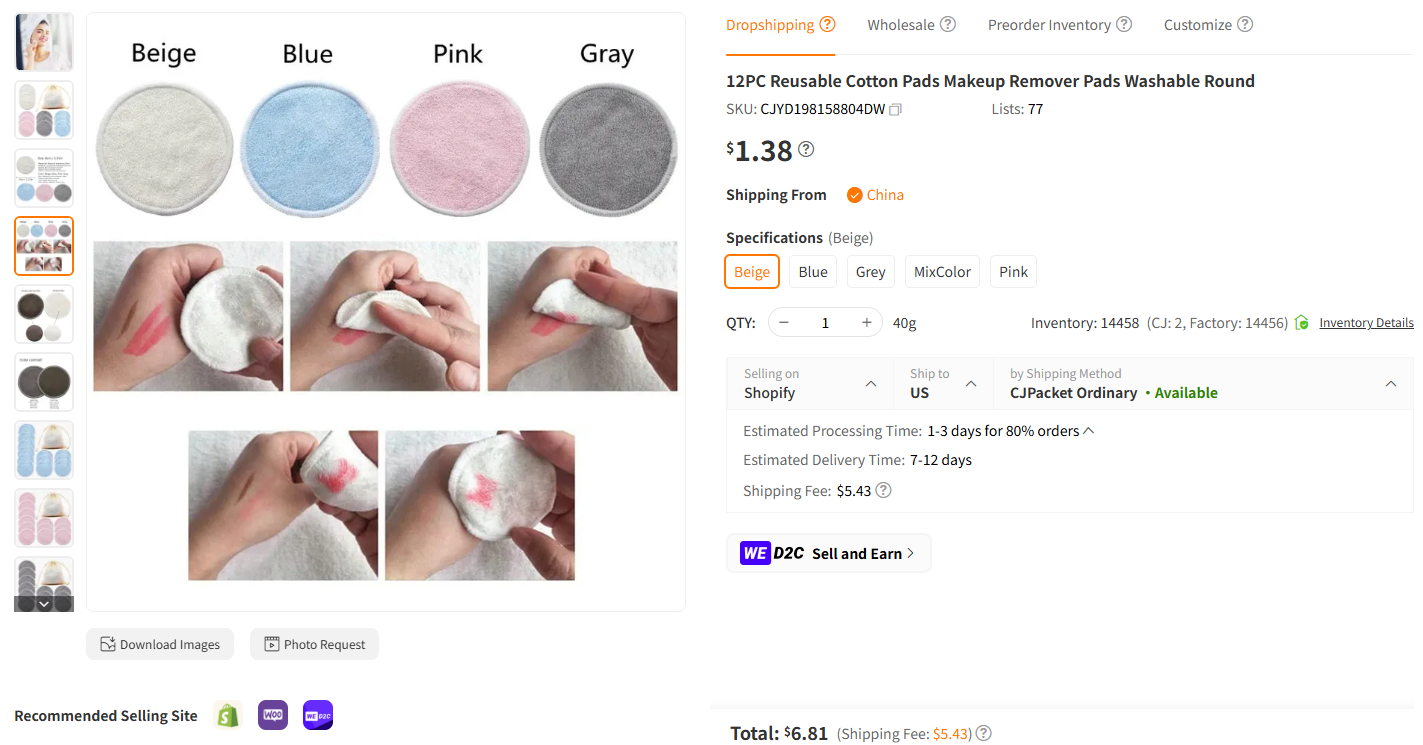
-
Wireless Charging Desk Organizers
Declutter and power up at the same time—design geeks and remote workers snap these up. They look great on flat-lays, too.

-
Pet Interactive Treat Dispensers
Keep cats and dogs entertained (and filmed!). These toy-treat combos are a hit on pet-lover feeds and easy to upsell with refill packs.

-
Collapsible Silicone Travel Bottles
TSA-friendly and pop-flat when empty—function meets form. Travelers love the convenience, and they’re light on weight.
![]()
-
Microfiber Waist Trainers
The fitness fashion trend isn’t dying. Breathable, stretchy cinchers that promise posture support—just watch the UGC flow in.

-
Magnetic Eyelashes & Applicator Kits
No more messy glue! Beauty gurus go nuts for these, and starter kits bundle well with cleansers or lash-care serums.
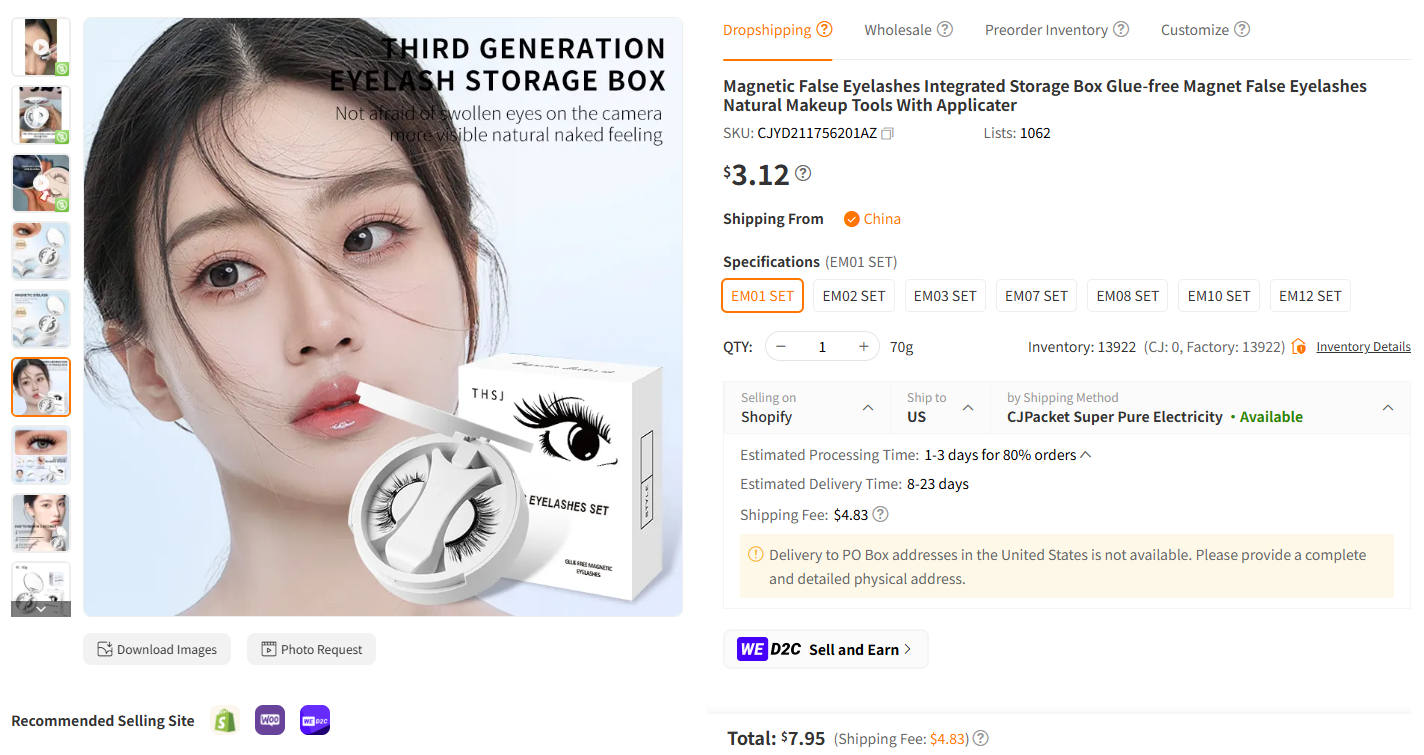
-
UV Nail Lamp Kits
At-home manicures remain strong. Compact lamps plus a set of trending gel polish colors make for an irresistible bundle.
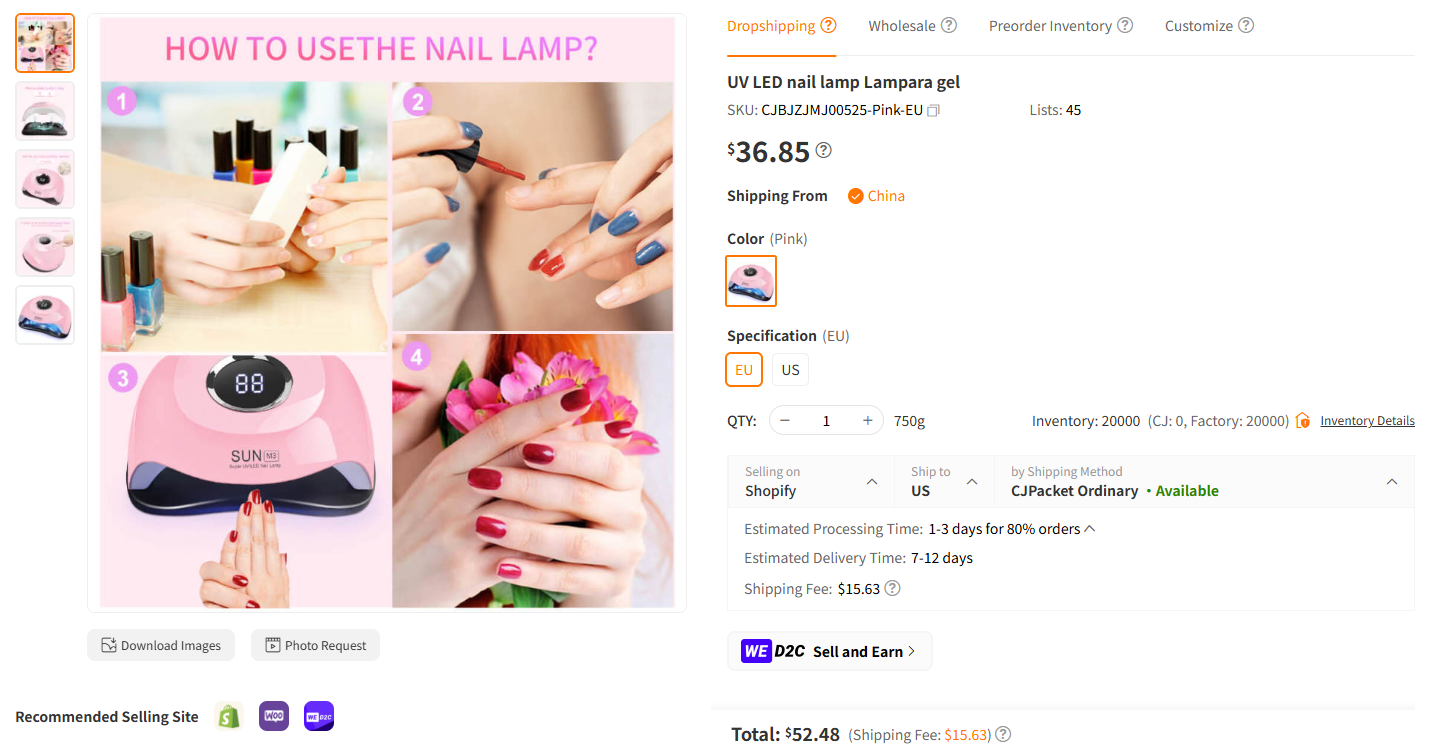
-
Mini Air Fryers for Single-Serve Cooking
Compact countertop appliances are still red-hot—think college students or busy professionals wanting quick meals.

Pro Tip: Always order samples first—quality and packaging can make or break your brand. And make sure your product pages have killer lifestyle photos and authentic reviews.
Marketing Essentials
Now that your store is live, you need to drive traffic and sales. Here are beginner-friendly marketing strategies to consider:
-
SEO (Search Engine Optimization): SEO is critical for long-term, cost-free traffic. Even if you rely on social media, don’t overlook SEO. It means optimizing your store and content so Google (and other search engines) rank you higher for relevant searches. Start by doing keyword research: find phrases your target customers search for (e.g. “best yoga mat for beginners”). Use tools like Google’s Keyword Planner or Ubersuggest. Incorporate those keywords naturally in your product titles, descriptions, image alt-text, and meta tags. Also blog regularly – see next section – using keywords.
Good on-page SEO will help your products appear when people Google terms. For example, Omnisend recommends using “high-quality, relevant, and informative content” and updating your site regularly to boost SEO. Also ensure your site structure is crawlable: have a logical menu hierarchy, fast page loads, and mobile optimization. Over time, backlinks (other sites linking to yours) will help too. Building SEO is a marathon, not a sprint, but it can “turbocharge your business” by driving organic traffic.
-
Influencer and Social Marketing: Leverage influencers and social media to reach your audience. Influencers (even micro-influencers with a few thousand followers) can boost awareness and credibility. Omnisend points out that relevant influencers “can help you increase brand awareness and reach new audiences, and may even influence buying habits in your favor”. When picking influencers, look for ones whose audience matches your niche (e.g. a fitness influencer for workout gear). Authenticity is key: let them genuinely try and showcase your product rather than forcing a sales pitch. Small influencers (nano/micro) often have very dedicated audiences and cost less. According to one source, 36% of marketers say influencer content outperforms their branded content, and about 20% of consumers have bought something based on an influencer’s recommendation.
On social media (Instagram, TikTok, etc.), create compelling content around your products: unboxing videos, how-to demos, or lifestyle shots. Use hashtags and tags strategically to increase reach. Engage with followers by answering comments and running contests or giveaways. Social selling can include running paid ads (below) or just organically posting useful, entertaining content.
-
Paid Advertising & Retargeting: Paid ads can kickstart traffic when organic reach is low. The simplest is Facebook/Instagram Ads: you can target users by interests, demographics, and even upload your email list. For example, create a Facebook Custom Audience from people who visited your site or added to cart. Then retarget them with ads featuring the exact products they looked at. You can also create “lookalike audiences” to find new customers similar to your existing ones. Google Ads (Search and Shopping) are another route: list your products via Google Merchant Center and bid on relevant keywords so your products show up on Google search.
A powerful tool here is retargeting: over 90% of visitors don’t buy on their first visit. You can re-engage them with ads. For example, Facebook/Instagram retargeting ads can show products to people who viewed but didn’t purchase. Similarly, Google Display Network can show banner or video ads to past visitors on other websites. Even SMS or email retargeting can help: if someone gave their phone or email, send a follow-up reminder about an item left in cart. The Omnisend guide notes that remarketing across social and Google can recover lost sales and boost ROI. Start with a modest budget; test different ads and creatives to see what converts best.
-
Content Marketing (Blogging, Video, Email): Content helps build trust and attract free traffic. Blogging is especially beginner-friendly. Create blog posts around your niche that answer customers’ questions or showcase products. For instance, “5 Beginner Tips for Yoga Enthusiasts” could feature your mats. Blogging “allows you to position your store as a helpful resource,” which builds authority. It also gives you fresh, keyword-rich content that boosts SEO. Omnisend notes that blogging can “establish your authority”, educate customers, address their pain points, and even drive leads via calls-to-action. Tip: write tutorials, product comparisons, or industry trends posts. Always include internal links to your products.
Video content is powerful too. You don’t need professional gear – even smartphone videos of product demos or quick tips can work on YouTube or TikTok. Optimize video titles and descriptions with keywords (Video SEO) so people find them. As Omnisend suggests, niche down your content (focus on a specific category) and keep branding consistent.
Don’t forget email marketing. It remains one of the most effective channels. Build an email list from day one by offering a discount or free resource (like a “20% off your first order” pop-up). Then send a welcome series introducing your brand, product launches, and helpful content. Automated flows like abandoned-cart emails can recover sales. SMS marketing (text messages) can also work if customers opt in, especially for flash sales or low-stock alerts.
In summary, your marketing mix should be multi-channel: SEO and blogging for organic reach, social media and influencers for awareness, and paid ads/retargeting for immediate traffic. Over time, prioritize what works best for your niche and budget.
5 Reliable Suppliers for 2025
Finding trustworthy suppliers is crucial.
-
CJdropshipping: A veteran all-in-one dropshipping service. CJ works directly with factories in China and offers a full suite of tools: product sourcing, order fulfillment, and even branding services (custom logos, packaging). They have warehouses in the US, EU, and elsewhere, which can drastically shorten shipping times. The CJ platform integrates with Shopify, WooCommerce, TikTok Shop, Temu, and more, allowing automated order syncing. Key pros: no monthly fee (free to use), one-on-one agent support, and low-cost sourcing with no inventory needed. The only downside is a learning curve to navigate their system. In practice, many successful dropshippers use CJ for its speed and extensive services.

-
AliExpress: The classic choice. AliExpress is essentially a massive marketplace of small Chinese suppliers. It connects you to thousands of product sources. You can find almost anything – electronics, clothing, home goods, accessories – with literally millions of listings. The main advantage is selection and easy order-by-order purchases. On the flip side, shipping is slow: standard delivery can take 15–45 business days to most countries. (Some sellers now offer ePacket or AliExpress Premium Shipping that cuts it to 7–15 days.) AliExpress is recommended for beginners because you can start with zero upfront cost and no contracts. However, you must vet each seller (look at their ratings and sales volume) and set expectations: long delivery is normal unless you use a fulfillment service.

-
Spocket: If you want faster shipping, Spocket is a curated dropshipping app that features primarily US/EU suppliers. Through Spocket, you can quickly import goods that ship from local warehouses in countries like the US, UK, Germany, and Australia. This means your customers can receive orders in days, not weeks. Spocket offers a user-friendly dashboard and automatically updates inventory so you don’t sell out-of-stock items. It costs a monthly fee (around $39.99 for the base plan), but the faster shipping can justify it. Typical products on Spocket include fashion apparel, jewelry, pet supplies, and beauty products. It’s especially good if your niche is something where customers expect quick delivery.
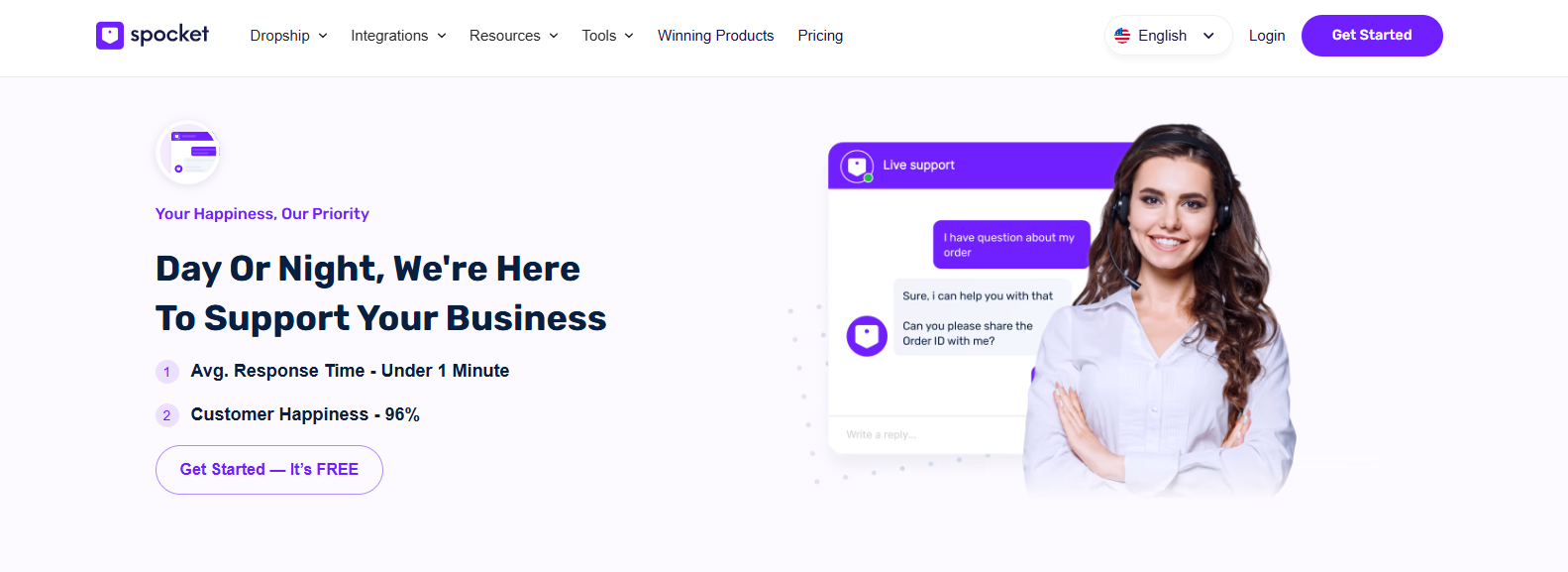
-
Doba: Doba is a dropshipping directory and platform with a unique approach. Rather than being a manufacturer, Doba partners with over 160 different suppliers and lets you manage them through one interface. In essence, when you find products on Doba, you can add them to your store and Doba handles placing the order with the right supplier. It also offers an “auto-listing” tool for eBay. Doba has over 2 million products across all niches. It does require a subscription (around $24.99/month), but it saves the hassle of researching and contacting each supplier individually. Doba ships globally, and inventory/price updates are automated. It’s ideal for beginners who want convenience and access to a broad catalog.

-
SaleHoo: Unlike the others, SaleHoo is a supplier directory. It doesn’t ship products itself, but it lists 8,000+ verified dropshipping suppliers and wholesalers. The suppliers on SaleHoo have been vetted for reliability, which reduces the risk of scams. By joining SaleHoo, you get access to all these suppliers’ catalogs (many of them in the US, UK, and China) in one place. This is great for finding niche products or hard-to-find items. SaleHoo’s focus is often on eBay/Amazon sellers, but it works for Shopify/WooCommerce too. There’s a fee to use SaleHoo ($27/month or yearly plans). The advantage is peace of mind: you’re buying from suppliers that SaleHoo has already checked out. If you prefer building relationships with individual wholesalers rather than using a single platform, SaleHoo is an excellent resource.

Each of these suppliers has its strengths. Many successful stores use multiple suppliers to mitigate risk. For example, you might use CJ for all product lines. Be sure to compare prices, shipping times, and seller ratings. Once you choose suppliers, build a good rapport with them (fast communication, prompt payment for orders, etc.) to get the best service.
Common Mistakes & How to Avoid Them
Starting out, there are some classic pitfalls many beginners fall into. Here are the top mistakes and how to dodge them:
-
Unrealistic Expectations: Thinking dropshipping is super easy money is a fast track to disappointment. Many newbies expect instant $1000 days and quit when that doesn’t happen. In reality, dropshipping requires effort – marketing, customer service, optimization – just like any business. To avoid this trap, set realistic goals (e.g. first break-even month, then steadily growing). Track progress carefully and be patient. Understand that it often takes months of work before sales really take off.
-
Poor Product Research: Don’t just pick a product that “sounds cool” without data. Many stores fail because their products simply don’t sell. Check product metrics before adding them: on AliExpress or Google Trends, see if people are actually buying or searching for the item. Look at how many orders a product has on AliExpress – zero sales is a red flag. Also compute profit margins. If you find a high-volume item but it only nets you a few cents per sale, it may not be worth it unless you’re huge volume. Focus on products that have steady sales, low competition, and healthy margins. In short, do keyword and competition research before buying any ads. Spend time here: Linnworks notes that not doing enough product research is a common dropshipping mistake.
-
Trying to Sell Too Wide or the Wrong Niche: It’s tempting to throw 200 products on your site “to see what sticks,” but this dilutes your marketing and brand. Instead, focus on a specific niche as you planned. Specialization helps you market effectively: for example, targeting “fitness trainers” is easier than “everyone who exercises.” Linnworks points out that trying to be a dropship version of Amazon by selling a zillion categories usually backfires. Similarly, make sure you chose the right niche in the first place – one with genuine demand, which you researched upfront. It’s okay to expand later, but start with depth in one area.
-
Ignoring Customer Service & Feedback: Remember, you’re the face of the brand to the customer, even if you don’t ship the product. If a customer has a problem (lost package, damaged item, etc.), you need to handle it. Many beginners ignore poor reviews by blaming the supplier, but this hurts your reputation. Always respond politely to complaints, offer refunds or replacements quickly, and communicate with your supplier to fix any issues. In short, own the customer experience. Linnworks emphasizes that even though shipping issues technically lie with the supplier, the customer holds you responsible. Excellent service earns repeat business and positive reviews, which are priceless.
-
Underpricing Too Much: Some new sellers try to undercut everyone by setting rock-bottom prices. But this can actually scare customers (they wonder if the product is legit) and shrinks your profit margin. As Linnworks explains, slashing prices low tends to make customers think “it’s too good to be true,” and it forces you to sell a lot more units just to make decent money. Instead, price competitively but focus on value (free shipping, bundles, branding) rather than outright lowest price. That way you still make profit on each sale and can reinvest in marketing.
-
Skimping on Your Website: Your store’s look and usability matter a lot. A clunky, unprofessional site will turn visitors away immediately. Avoid cutting corners on design or charging $10 for a generic Fiverr template. Linnworks warns that the website is where customers judge you – invest in a clean, modern design and make sure it works smoothly, especially on mobile. A bit more spend on a premium theme or developer will pay off in customer trust and higher conversion.
-
No Marketing Plan: Finally, don’t make the mistake of “build it and they will come.” Simply launching a site won’t bring traffic. You need a clear marketing strategy and budget. Use a mix of SEO, social media, email and paid ads as discussed earlier. Set aside at least some funds for advertising or influencer fees. Plan your approach – for example, run Google Ads targeting specific product keywords, or allocate a daily budget for Facebook retargeting. Linnworks notes that many people err by expecting organic SEO to magically fill the store. In reality, you should expect to work at getting your first customers, then keep optimizing those campaigns as you learn what works.
By being aware of these pitfalls – and planning around them – you’ll avoid common traps that derail many dropshipping beginners.
Final Tips & Encouragement
Starting a business is always a bit of an adventure, but dropshipping in 2025 has some real tailwinds. The data shows shoppers want to buy online – the dropshipping market is only getting bigger. In fact, CJdropshipping’s analysis emphasizes that “the global dropshipping market is expanding” and customers are “ready to click and buy – possibly from your own dropshipping business”. However, they wisely caution that success requires effort: carve out a niche and offer something unique.
So here are some final tips:
-
Stay Nimble: Trends change fast. Watch your analytics and social media chatter. If a product isn’t selling, don’t be afraid to replace it. Test new marketing angles. The stores that thrive in 2025 are the ones that adapt quickly to customer feedback and data.
-
Keep Learning: The ecommerce world constantly evolves. Tap into free resources: follow reputable blogs (Shopify’s blog, CJdropshipping’s guides,etc.), watch expert videos, and join dropshipping communities. Read success stories and case studies to get ideas. Continuous improvement of your product selection, store, and marketing is key.
-
Be Trustworthy and Transparent: Always deliver on your promises. If delivery will take weeks, set that expectation clearly. Be honest about product specs and avoid hype. Trust is everything; a steady stream of good reviews will grow your sales over time, and conversely, one viral complaint can hurt you.
-
Don’t Quit Too Soon: Most winners didn’t strike gold immediately. Give your store a real chance to grow. Even if you’re not making huge profits in the first months, every sale and every customer review is a data point. Refine your ads, tweak product descriptions, try new products. Often a breakthrough comes after persistent effort and small adjustments.
-
Use Available Tools: Leverage apps and plugins that automate dropshipping processes (order syncing, pricing updates, inventory tracking). Use analytics tools to identify your best products. Use email/SMS tools to follow up automatically. The more you automate tedious tasks, the more you can focus on strategy and customer service.
Remember, every successful dropshipper started where you are now – with an empty store and a plan. The difference is they took action and kept improving. You have the knowledge and tools at your fingertips. Global e-commerce isn’t a fixed pie; every year new shoppers enter the market. If you stick to smart practices and keep a learner’s mindset, there’s plenty of room for new stores.
Go forth and launch your store! With a solid niche, a well-built site, and persistent marketing, you can build a sustainable dropshipping business in 2025. Good luck – the first sale can be around the corner if you keep at it.
How to Start a Dropshipping Business FAQ
1.Do I need any upfront investment?
Minimal. You’ll need to pay for an e-commerce platform subscription (e.g., Shopify), your domain name, and any premium apps or marketing costs. There’s no requirement to buy or stock products in advance, which keeps startup costs low.
2.How do I choose a profitable niche?
Look for niches with demonstrated demand (using tools like Google Trends or Amazon Best Sellers), manageable competition, and reasonable profit margins (ideally ≥ 20–30%). Focus on a target audience whose needs you understand—whether it’s fitness accessories, eco-friendly home goods, or pet products.
3.Where can I find reliable suppliers?
Popular sources include CJDropshipping and AliExpress. You can also work directly with manufacturers via Alibaba or niche-specific B2B directories. Always vet suppliers by ordering samples, checking processing times, and reviewing customer feedback.4.How should I set my pricing strategy?
Calculate your all-in costs (product cost + shipping + transaction fees + marketing) and apply a markup that achieves your target profit margin (commonly 2×–3× the landed cost). Test free-shipping-built-in vs. separate shipping fees to see which converts best.
5.Which marketing channels work best for dropshipping?
Social media ads: Facebook, Instagram, and TikTok for targeted paid campaigns.
Content marketing: Blog posts, SEO, and YouTube videos to attract organic traffic.
Email marketing: Welcome sequences, abandoned-cart reminders, and post-purchase follow-ups to drive repeat sales.6.How can I scale and automate my dropshipping store?
Order automation: Use apps (e.g., CJdropshipping) to auto-fulfill orders with suppliers.
Outsource customer support: Hire virtual assistants for inquiries and social-media management.
Expand product lines: Introduce complementary products in the same niche once you identify winners.
Global fulfillment: Add multiple suppliers or regional warehouses to reduce shipping times and costs.

